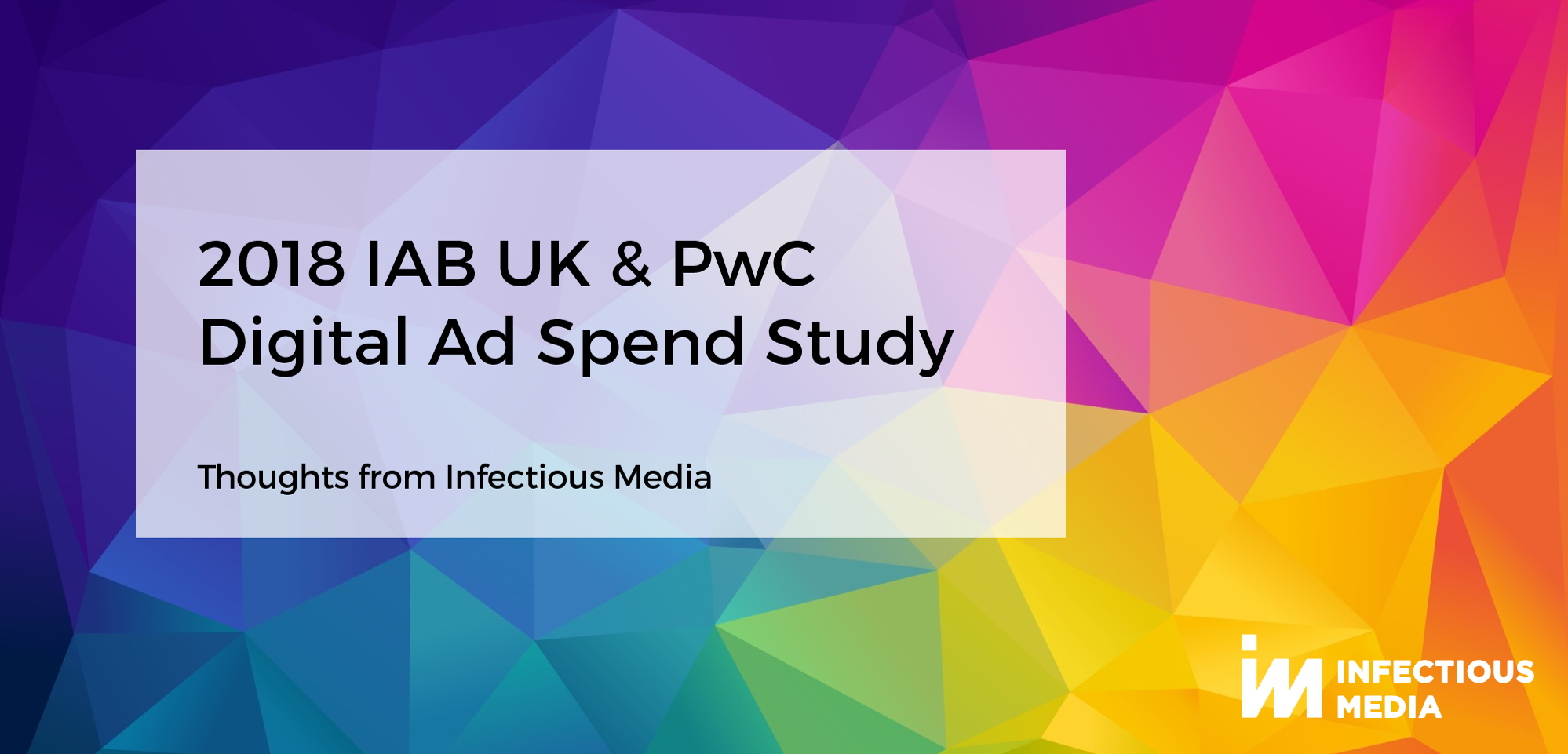2018 was another great year of growth for Programmatic with over 80-90% of all display and video inventory now platform traded. The UK digital advertising market is worth £13.44bn, an increase year-on-year of 15%, reveals the 2018 IAB UK & PwC Digital Adspend Study.

In the context of the overall ad market in the UK, this is now dominated by digital with 60% in those channels. Traditional media now accounts for roughly 40% of the overall market with TV half of that. All media aside from digital are in different stages of decline with print the sharpest, and TV due to start a steep drop due to changing viewer habits and the shift to digital video. Other media are now starting to be traded programmatically with small but significant volumes of TV and Audio now moving to addressable buying methods.
Report highlights:
- The majority of all growth is coming from smartphone advertising, which has increased by £1.65bn (35%) from 2017.
- Smartphone advertising now represents 51% of all UK digital ad spend, up from 45% in 2017.
- Video is now the largest display format (£2,307m), overtaking standard display banners (£1,486m).
- Outstream/social in-feed has increased its majority in total video spend, now occupying a share of 57%, up from 52% in 2017.
- Social revenue now represents 23% of all digital ad spend.
- Growth is predicted to slow during 2019, with 5% estimated growth (+9% digital, +11% display, +9% search) compared to 15% in 2018.
Analysis:
This report shows that marketers are catching up with the pronounced shift in media consumption but also the impact of the buying efficiencies through trading programmatically. Previously, there has been a large disparity between the device a user is using, and where adspend has been concentrated (traditional channels and desktop). Outstream video has been one of the main catalysts of this growth in mobile showing that integrated formats that are sympathetic to the user experience are key to growing this channel.

Banner based display advertising has had a hard time over the past few years and it looks like it's only going to get worse. Trends such as banner ads cluttering up some website pages, driving increased uptake of ad blockers, and the continuation proliferation of ad fraud has contributed to the slow YOY growth of banner ads. With the continual demise of the cookie, this trend doesn’t look like it's going to change anytime soon, but this needn’t be the case. Optimising your supply and driving relationships with quality publishers will give you access to premium inventory whilst still leveraging non 3rd party cookie based targeting techniques, such as contextual or using a publishers own data sets.
Mobile and video has been the standout growth channels in this year's report, but this is about to accelerate further. With the widespread update of 5G over the next few years, the role of the smartphone will become even more central our lives, and concerns about heavy file loads of video ads will be a thing of the past.

With the upcoming 5G mobile update, unsurprisingly, mobile video is increasing as advertisers take advantage of recent developments to make video mobile placements that are fit for purpose on mobile; Shorter (built for attention) and leaner (faster load times). Publishers are also investing in more video content across their sites to sell pre-roll units, as well as adding non-intrusive and fast loading in-stream formats which advertisers are buying on a cost-per-completion basis. This is not just an increase in programmatic, this proves that brands are shifting their money from traditional TV to more nimble, interactive and audience based campaigns designed for the digital modern age.
Over the past few years, 90% of the growth of digital has come from just 2 entities: Google and Facebook, putting social at the heart of digital advertising for marketers. The growth comes from 2 factors, unparalleled audience reach and ease of use. Ease of persistent user tracking, proprietary data sets, off the shelf measurement and testing solutions and ad offerings for any stage of the user funnel. Although not without their (sometimes major) pitfalls, the increasing range of social platforms users consistently use, means this is now a marketing channel in its own right.

.jpg)


